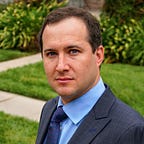A Librarian’s Advice to Expand Your Non-Fiction Reading
Recommending books (or readers’ advisory, as its called in the trade) is one of the most useful skills librarians bring to the readers. To understand the “appeals” of a wide variety of books, quickly assess people’s tastes, and “book talk”, or pitch, selections with no prep are just a few of your everyday librarian’s hidden talents. One misconception many people have about readers’ advisory, though, is that it applies only to fiction. This couldn’t be further from the truth! In fact, librarians are always ready to turn a non-fiction reader onto their next mind-blowing selection. Below are some ways for curious non-fiction readers to discover something different:
Cross genres
You may not be aware, but non-fiction books have genres that are as well-defined as fiction. A very easy way to expand your reading is to make a genre shift — the benefit of this is that you keep the qualities you like, and throw in a little spice. For example, it would be an easy move from the presidential biographies you usually read to popular history writers with a wider scope like Barbara Tuchman, Nathaniel Philbrick, and Erik Larson. Their books dip into the life stories of many real people, including world leaders, but differ from biographies in that they are usually more broadly focused on historical events or periods. Here are a few other genres and subgenres to consider, with authors: Idea/concept books (Malcolm Gladwell, Nassim Nicholas Taleb, Dan Ariely), off-beat histories (Mark Kurlansky, Sarah Vowell, Susan Orlean), trivia with personality (Mary Roach, Bill Bryson, David Rakoff), graphic memoir (all three volumes of March, Lucy Knisley, Riad Sattouf), narratives in nature (John McPhee, Peter Matthiessen, John Muir).
Go back in time
By nature, I believe that most people have a presentism bias, which in terms of reading means they mostly read items published within the last ten years or so. This is especially true with fluffy booklists on the web that tend to rely too much on recently published books (note how many of the authors I mentioned above have published within the last ten years). From this point-of-view, breaking out of a reading rut means returning to the enduring works of specific fields — books that may no longer be cutting-edge, but that remain foundational. A few examples of these would be: A History Of Russian Literature by D.S. Mirsky, Silent Spring by Rachel Carson, Beyond Culture by Edward T. Hall, Presentation of Self in Everyday Life by Erving Goffman, Computer Lib/Dream Machines by Ted Nelson, Meditations of Marcus Aurelius, and the histories of Will & Ariel Durant.
Gentle shifts in subject area
Sometimes, though, you don’t want a jarring change of direction. In that case, it’s a good idea to take a small side-step into a related field or subject area. This approach would be akin to backing your car out of a parking spot, and pulling into the next one over; so if you’ve been reading books on cosmology by Brian Greene or Lisa Randall, you might back out and pull into some of the cutting-edge tech-oriented books of Michio Kaku, or something like The Great Unknown: Seven Journeys to the Frontiers of Science by Marcus Du Sautoy. Pulling in another spot over, you could peruse some of the popular science books of Leonard Mlodinow.
Crowdsource suggestions
Perhaps you’re interesting in going way out of your regular reading byways? In that case, go on social media and crowdsource suggestions from your friends (Facebook) or strangers (Reddit, r/suggestmeabook). Because people will inevitably give you all sorts of off-the-wall suggestions, I advice you to always ask why someone is recommending a particular book. Sometimes, those explanations will be a better determinant of whether a book is for you than a title, cover, or summary. Keep a list of people’s responses and anytime you need something different, go back to the list to bring a little chaos into your reading.
Re-read books you’ve loved
Only over the last few years have I began to understand the pleasure of re-reading books. With some books, like Starship Troopers by Robert Heinlein, which I loved as a teenager, my first question was whether I would still be as entertained by it (nope), whereas with others like Letters to a Young Poet by Rainer Maria Rilke, I wonder whether their insights remain as important to my life as before (yes). Regardless of the questions I enter my re-reading with, it’s rare when I don’t feel the reading is somehow heightened due to my previous experience. Is suggesting that you re-read books a cop-out when it comes to expanding your reading? Not to me. It just means you’re expanding inward instead of out.
Obviously, there are many more ways to bring variety to your non-fiction reading, but I see this list as a good way to start. Another place to begin is to strike up a conversation with your favorite reference librarian. There’s no telling what excellent suggestions they’ll have for you. Happy reading!
